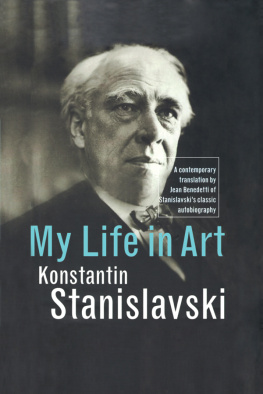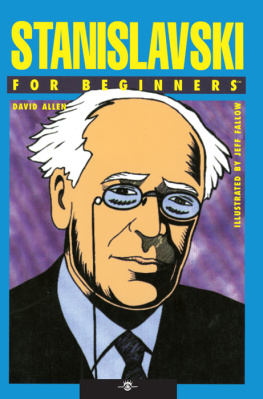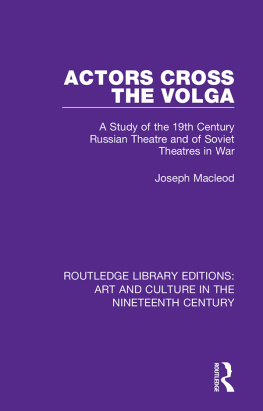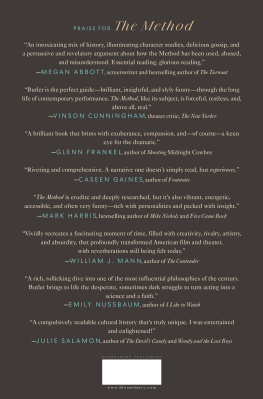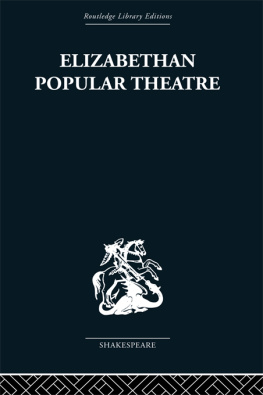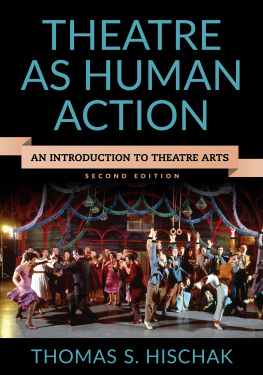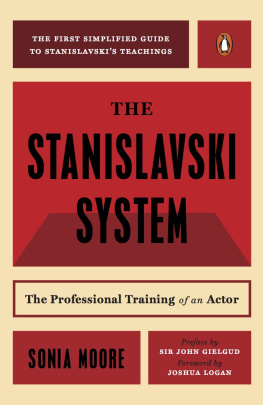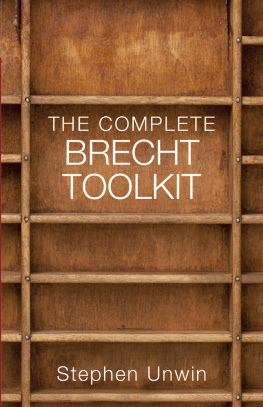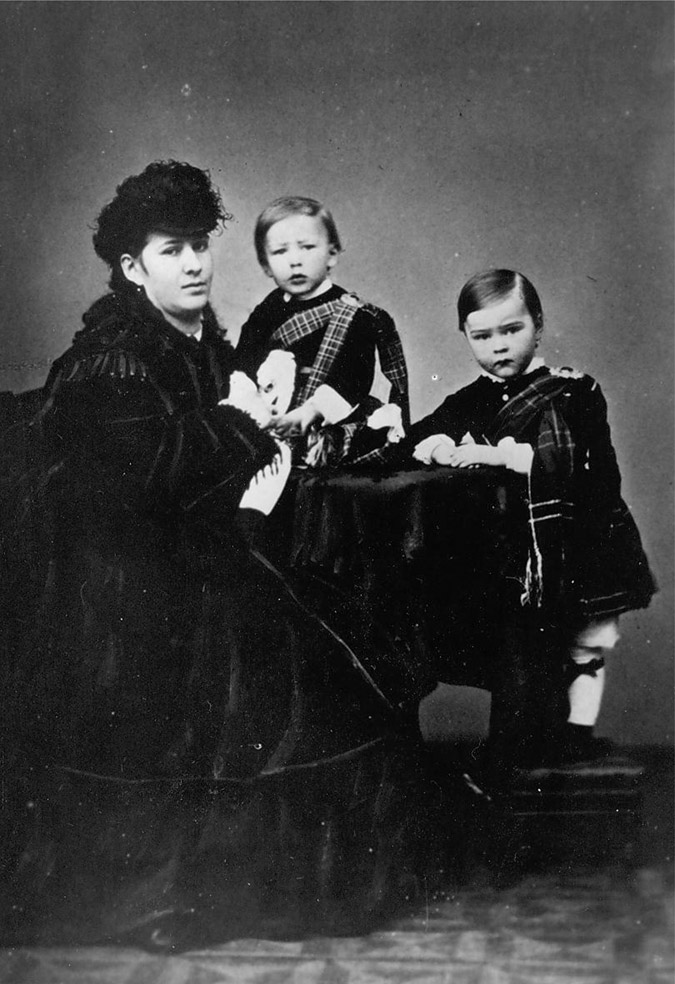Published 2008 by Routledge
2 Park Square, Milton Park, Abingdon, Oxon, OX14 4RN
Simultaneously published in the USA and Canada
by Routledge
711 Third Avenue, New York, NY 10017, USA
Routledge is an imprint of the Taylor & Francis Group, an informa business
Translation 2008 Routledge
Introduction 2008 Laurence Senelick
Translators Preface 2008 Jean Benedetti
Typeset in Joanna by RefineCatch Limited, Bungay, Suffolk
All rights reserved. No part of this book may be reprinted or reproduced or utilized in any form or by any electronic, mechanical, or other means, now known or hereafter invented, including photocopying and recording, or in any information storage or retrieval system, without permission in writing from the publishers.
British Library Cataloguing in Publication Data
A catalogue record for this book is available from the British Library
Library of Congress Cataloging-in-Publication Data
Stanislavsky, Konstantin, 18631938.
[Moia zhizn v iskusstve. English]
My life in art / Konstantin Stanislavski ; translated and edited by
Jean Benedetti.
p. cm.
1. Stanislavsky, Konstantin, 18631938. 2. Theatrical producers and directorsSoviet UnionBiography. I. Benedetti, Jean. II. Title.
PN2728.S78A3 2008
792.0233092dc22
[B]
2007036602
ISBN 13: 9780415436571 (hbk)

The problem of transliteration from the Cyrillic to the Roman alphabet is complex. There are a number of systems. The most complex of these is intended to be universally applicable to languages using Roman script. It is normally reserved for academic footnotes and bibliographies. Other, simpler systems are used by writers and scholars. A major difference in transliteration is in the spelling of the ends of names such as Stanislavski. It can be -ski or -sky. There are two /i/ sounds in Russian and produced in the back of the mouth and forwards in the mouth respectively. Their use is determined by the proceeding consonant. /i/, as in Stanislavski is always spelled with . This is strictly transliterated as -ij or, more simply -i. This is the form used by Elizabeth Hapgood, Stanislavskis original translator. However, there is a tradition, notably in the U.S., to use the spelling Stanislavsky, advocated by an alternative system of transliteration. This is a perfectly legitimate choice. All other European languages use the ending -ski.
Chekhovs death ripped out a large part of the theatres heart. Morozovs illness and subsequent demise ripped out another part. The dissatisfaction and despair after the failure of the Maeterlinck plays, the closing down of the Povarskaya studio, my unhappiness with myself as an actor, my total lack of clarity about where I was to go, would not let me rest, killed my belief in myself and made me wooden and lifeless onstage.
In my many years of work on the stage, from the Alekseev Circle to my wanderings through amateur groups to potboilers and finally the Society of Art and Literature and a few years at the Moscow Art Theatre, I had learned much, understood much, come across a great deal by chance. I was continuously looking for something new in the actors inner process, in directing and the principles of staging. I rushed this way and that often forgetting important discoveries and being attracted to the fortuitous and the superficial. By the time of which I write, as a result of my artistic experience, I had collected a ragbag of all kinds of technical tricks. Everything was thrown in higgledy-piggledy, without discrimination or system, and so it was difficult to use my own artistic treasures. I had to put things in order, sort out, examine and evaluate and, as it were, put all the material on the right mental shelves. Rough stones had to be hewn and made the foundations of our art. What had become worn out with time had to be rejuvenated. Without that, no further progress could be made.
It was in that mood that I went to Finland for the summer. There, during my morning walk, I would go to the sea and, sitting on a rock, take stock of my artistic past. Above all I wanted to know where my earlier creative joy had gone. Why formerly had I been bored on the days I was not acting, while now I was happy when I had a free day? It is said that for professionals who appear every day and repeat the same role many times, it cannot be otherwise. Duse, Ermolova, Salvini played their lead roles many more times than I. Yet that did not prevent them from making them perfect every time. Why was it that I went backwards and became more wooden the more I played my roles? I went over the past step by step and understood ever more clearly that the inner content I had put into the roles when I first created them and the outer forms in which these roles were expressed with the passage of time were as far apart as heaven and earth. Previously everything had flowed from the beauty and excitement of inner truth. Now all that remained was an empty shell, dust and ashes that had stuck in the mind and in the body, which had nothing to do with genuine art. Take Dr. Stockman, for example. I remember how at first when I played him it was easy to adopt the point of view of a man with pure thoughts, who looked only for the good in other people, who was blind to the evil feelings and passions of the petty little men all round him. The emotions I had put into the role were drawn from living memories. I had seen a friend, a pure man like Stockman, persecuted because his innermost convictions would not allow him to do what the powers-that-be required. While I was playing the role onstage I was guided unconsciously by these living memories and was inspired to be creative.
But, with time, I forgot those living memories that were Stockmans inspiration, his mental drives, which formed the central theme of the whole play.
Sitting on the rock in Finland, reliving my former creative process, I quite accidentally came across the forgotten feelings I had given Stock-man. How could I have lost them? How could I carry on without them? And why could I remember all the externals, every movement of the muscles of the legs and arms, the facial expressions, the shortsightedness of this man who screwed up his eyes, etc.?
During our recent foreign tour, and previously in Moscow, I had mechanically repeated precisely those carefully worked out features of the role, the mechanical signs of non-existent emotion. In places I tried to seem jumpy, overwrought and made my movements faster. Elsewhere I tried to appear naive and so took on the eyes of an innocent child. Elsewhere again, I stressed the walk and the gestures that were typical of the character the external results of non-existent feelings. I copied navet without being nave. I hurried my legs along with tiny steps without feeling impatient, etc. My performance was more or less skilled, I imitated the external signs of feelings and actions but did not feel real experiences, or real urges to action. Performance by performance I had mechanically created the habit of going through these technical gymnastics. Muscular memory, which is so powerful in actors, confirmed me in my habits as a performer.
Sitting on the rock in Finland, I analysed other roles in my mind, trying to discern the living material out of which, at the time, they had been created, i.e. personal, living memories that inspired me to be creative. I went over all the moments in performance that had proved so difficult

